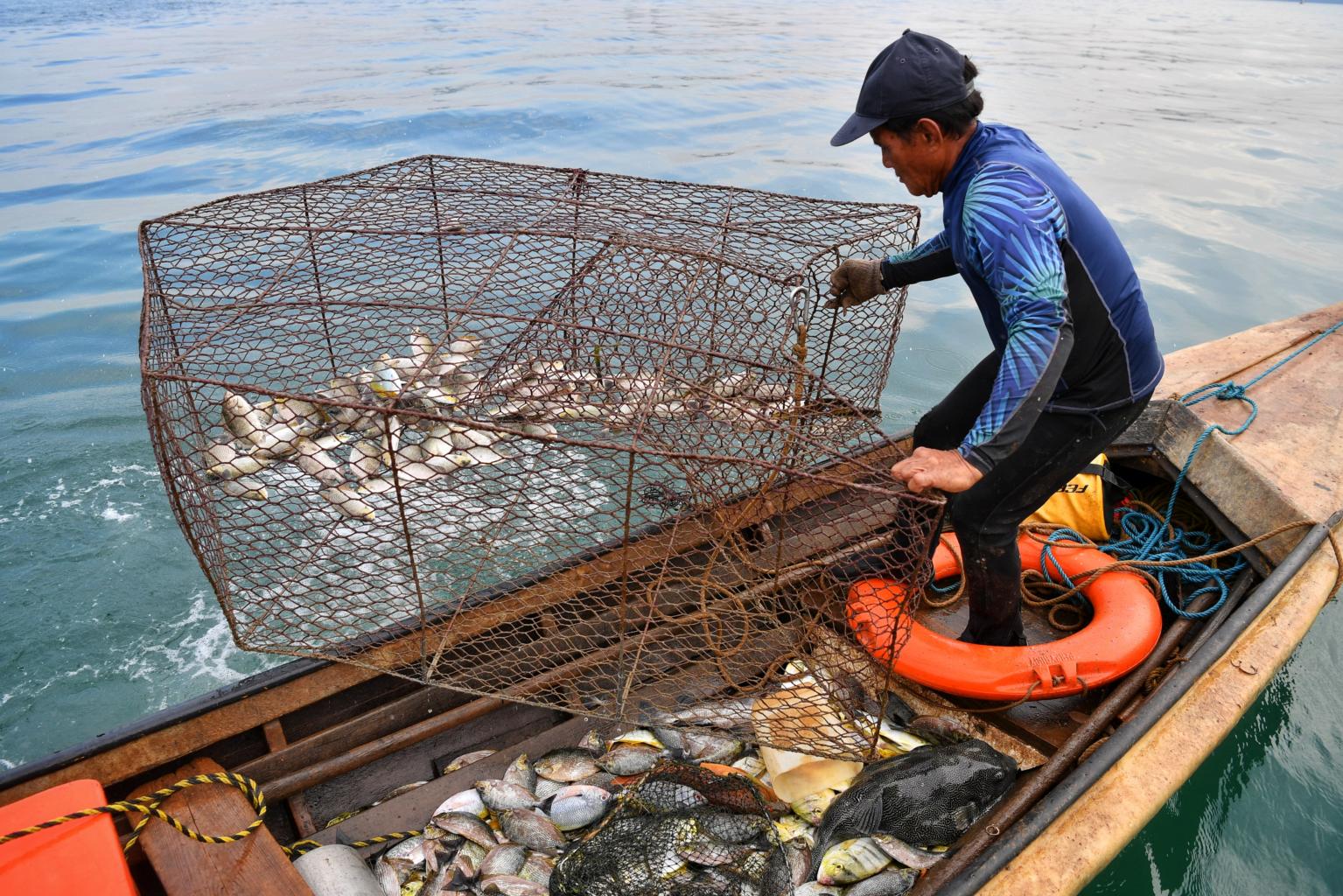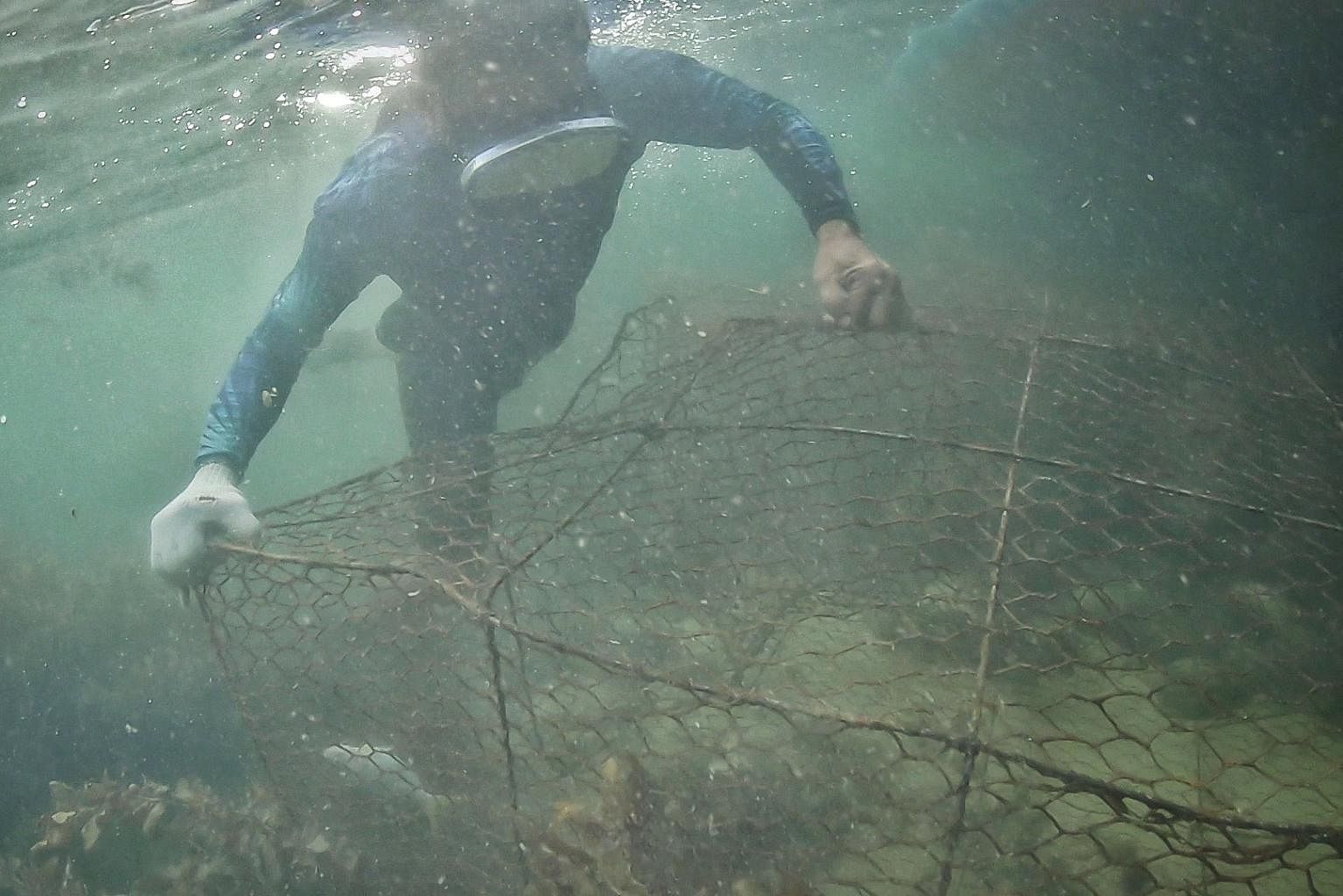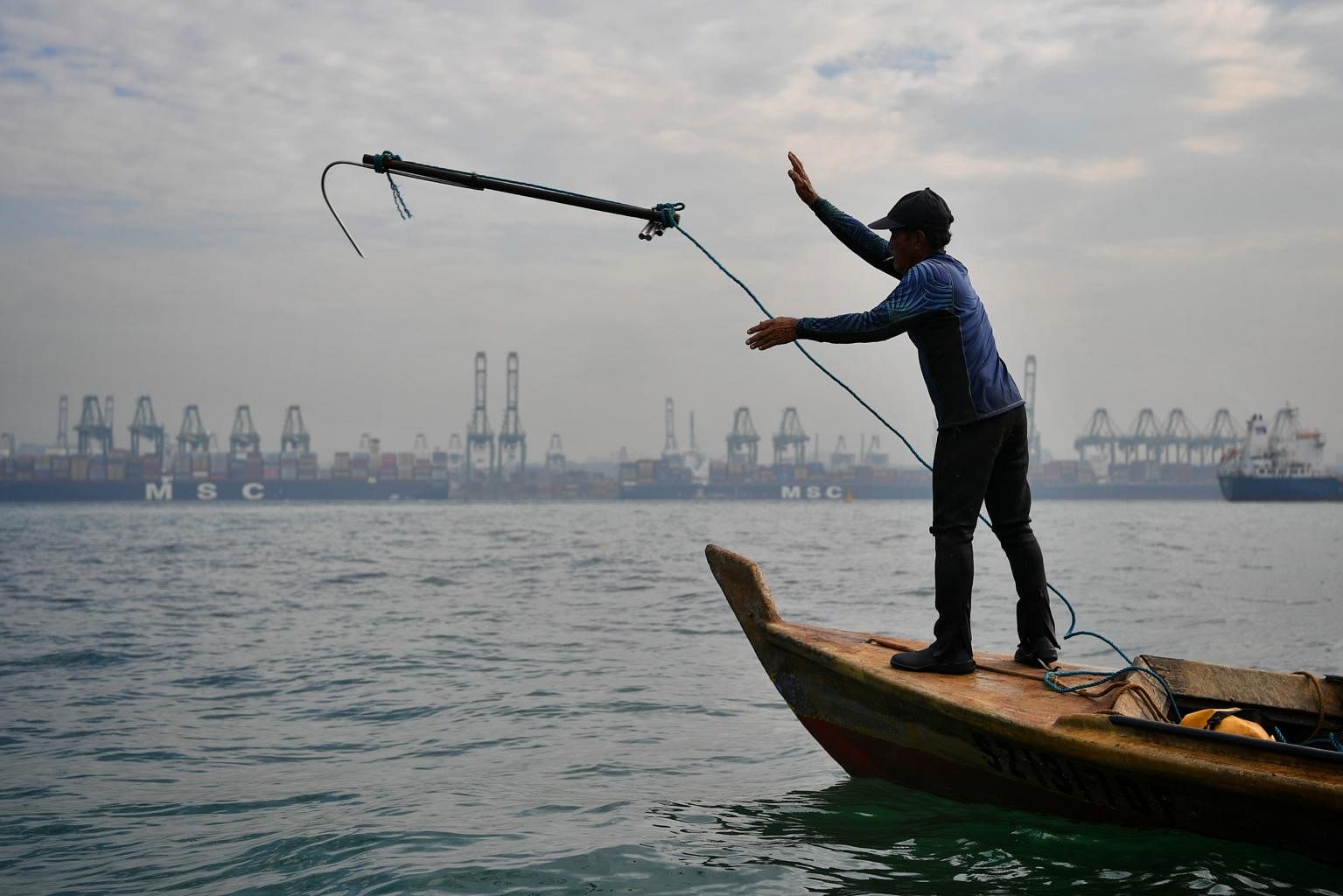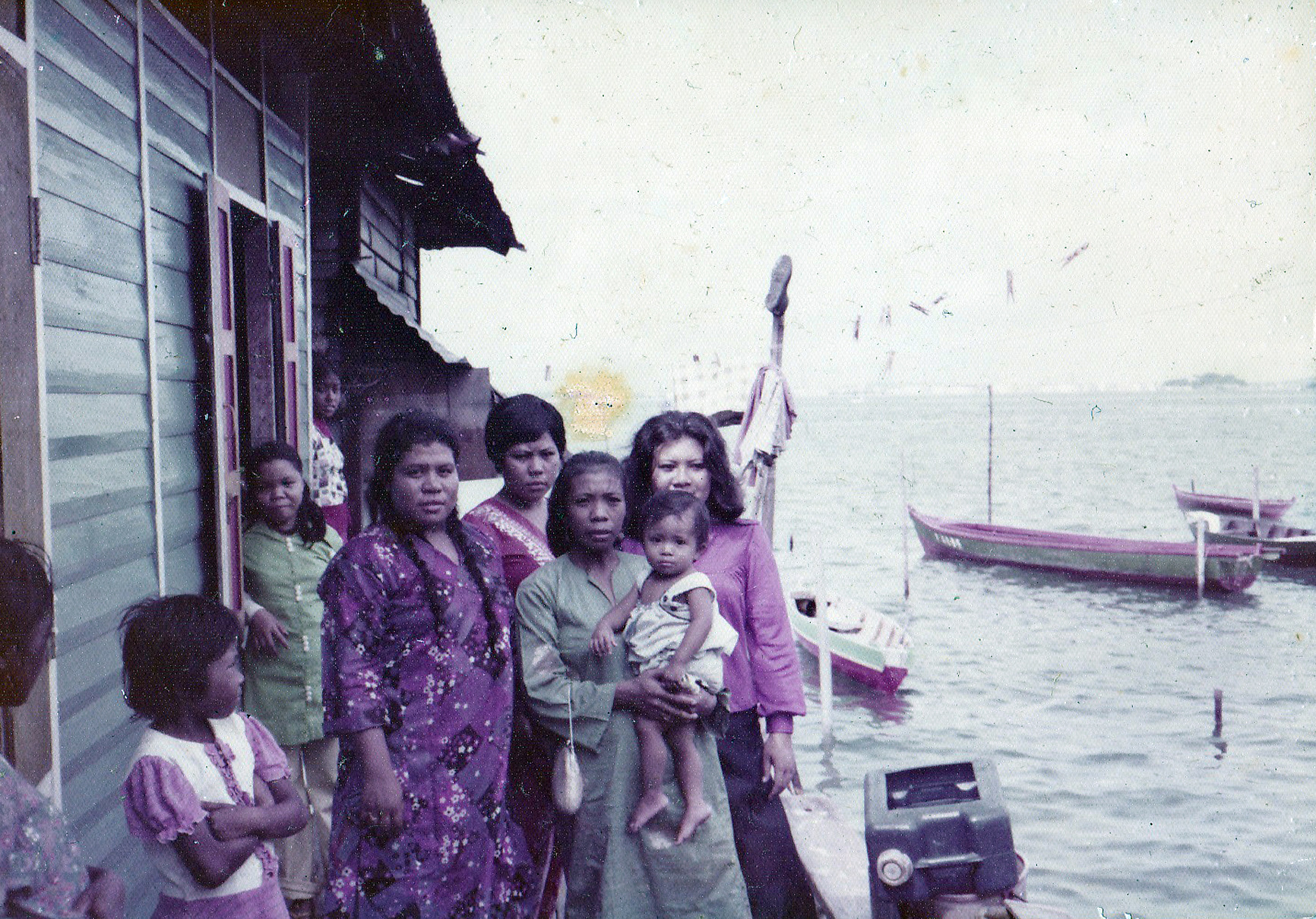A view of the past: Former Pulau Sudong islanders face their old home from West Coast Park
Sign up now: Get ST's newsletters delivered to your inbox
Siti Sarah, Jean Iau
Follow topic:
SINGAPORE - Two brothers built a makeshift shelter at the beach in West Coast Park using bamboo poles, tarmac mats and pieces of cardboard.
They wanted to let their relatives sit and chat facing their former home, Pulau Sudong, while they were out fishing.
But shipping containers and luxury yachts obstruct their view of the island.
Yet according to Mr Ahmad Sah Mohamad, 69, and his brother, Mr Hamzah Mohamad, 66, this unkempt enclave in West Coast Park is precious as it holds the last semblance of their former lives on Pulau Sudong.
"This is the last place we have left," said Mr Hamzah, a retired deliveryman as he looked around the fenced-up enclave.
In the late 1970s, the inhabitants of Pulau Sudong were made to move to the mainland as the island was earmarked for redevelopment. Several other islands in the vicinity, such as Pulau Semakau and Pulau Seking, endured a similar fate.
Pulau Sudong has since become a military live-firing zone, while Pulau Semakau and Pulau Seking were connected to form the Semakau Landfill.
Today, under shelters built at West Coast Park by others, the former inhabitants of several islands spend their weekends chatting, fishing or weaving bubu fishing traps. They sit facing their boats which are parked along the 70m or so of shoreline that has not been replaced by seawall.
"We were very sad to have to leave (Pulau Sudong) because we spent our formative years there," said Mr Hamzah.
His brother added: "There's a saying in Malay, 'tempat jatuh lagi dikenang, ini pula tempat bermain'."
It loosely translates to the place where one falls down and grows up in is hard to forget because it is where one was nurtured.
Mr Ahmad Sah said things on mainland Singapore are a lot more convenient. It is a lot easier to get around and there is clean water from the tap, but he misses how peaceful things were on the island.

According to archival reports, there were 393 people living on Pulau Sudong in 1960. They mostly made a living selling what they caught and collected from the bountiful waters surrounding them.
Mr Hamzah said: "I miss the calmness and going out to sea and being near the sea. It was very peaceful."
Bubu fishing on the island did not require motorised boats, as it does today, since people could row their boats to where the traps were laid, said Mr Ahmad Sah, who was 26 when he left Pulau Sudong.
He added that the divers were proficient enough to not require scuba gear to retrieve bubu traps, which were commonly set over 10m deep.
For both men, the move to mainland Singapore meant that fishing alone could not support their families, and they took on blue-collar jobs to survive.
"At the time, I was just thinking about living in a new flat and how we had to prepare all the utilities ourselves, gas, water and all that.
"I wasn't even able to buy gas (when we first moved over) because I was in debt," said Mr Ahmad Sah, who is still the watchman for the fishing boats parked at the West Coast Park.
"It was hard to adapt and there was also a feeling of sadness because we had to leave everything behind and come here," he added.

But the brothers clung on to their islander roots.
They kept their boats and continued to weave bubu traps and go fishing every week.
"We made it a point to go out to sea, so we never lost touch with things we did on the island," said the elder brother.
Bubu fishing not only reminds them of life on Pulau Sudong, but also lets them get as close to their former home as they are allowed. The duo set the traps, which they weaved from chicken wire, in the vicinity of the island, unless there is live firing going on.

"When we see the island from far, we don't feel that much sadness anymore... But in the beginning, we did," said Mr Hamzah.
His brother added: "Before the military occupied the island, we would take our family to the island weekly to go swimming together. Now, we can't do it anymore."
The brothers are concerned that their islander way of life is dying out.
"For the younger people, it's an inconvenience to come (to West Coast Park) and go under the sun and make the bubu... But first, as the son of a fisherman, you must at least know how to make a bubu to continue the legacy. Second, if he knows how to do it, bubu fishing is a good source of income too," said Mr Hamzah.
He added that he would not force his children to learn how to weave bubu traps unless they express interest.

But all is not lost with the next generation.
The brothers' niece, Ms Asnida Daud, 48, has been trying to ensure her family's stories are told.
In November last year (2021), the educator recited a poem that she wrote about her memories of visiting the island as a girl at the Singapore Writers Festival.
The poem, called Aok Diko (Yes, Of Course), tells the stories of the islanders, using their dialect. The music was composed by her 11-year-old son.
It recalls the painful uprooting the Sudong islanders went through, just like the inhabitants of other islands such as Pulau Seking, Pulau Semakau, Pulau Bukom and Pulau Blakang Mati, which is now Sentosa.

Ms Asnida used to visit her extended family on Pulau Sudong every weekend in the 1970s and has fond memories of playing on the island.
"The poem is my journal and my memories of my visits to the island and what I learnt from a child's point of view," she said, listing the white sandy beach, the clear waters and the fearless islanders as examples.
"They are very peaceful people and have a very 'redha' (accepting) attitude to things and that's why when they were told to move, they accepted it and moved on," said Ms Asnida.
She hopes the stories of her relatives' lives are remembered and that people learn from their way of life from an environmental sustainability perspective.
"These are the people who lived in the environment, who were in harmony and one with it.
"We should be learning from them," she said.

